Research Article
Nano Cinnamon: A Study in Human Blood Medium Using Cyclic Voltammetry on Glassy Carbon Electrode (GCE)
Muhammed Mizher Radhia, Anfal Ismael Ibrahimb, Majid Sakhi Jabirc, Emad Abbas Jaffar Al-Mullad*, Wisam Hindawi Hoidye
aRadiological Techniques Department, Health and Medical Technology College-Baghdad, Middle Technical University (MTU), Iraq.
bAshur University College, Dental College, Baghdad-Iraq
cApplied Science Department, University of Technology-Baghdad
dCollege of Health and Medical Techniques, Al-Furat Al-Awsat Technical University, 54003 Al-Kufa, Iraq.
eDepartment of Chemistry, College of Education, University of Al-Qadisiyah, Al-Qadisiyah city, Iraq
* Corresponding author. E-mail: almullaemad@gmail.com
Received: Sep. 21, 2021; Accepted: Oct. 10, 2022; Published: Oct. 23, 2022
Citation: Muhammed Mizher Radhi, Anfal Ismael Ibrahim, Majid Sakhi Jabir, Emad Abbas Jaffar Al-Mulla, and Wisam Hindawi Hoidy, Nano Cinnamon: A Study in Human Blood Medium Using Cyclic Voltammetry on Glassy Carbon Electrode (GCE). Nano Biomed. Eng., 2022, 14(2): 167-172.
DOI: 10.5101/nbe.v14i2.p167-172
Abstract
The redox behavior of cinnamon nanoarticles (CNPs) was studied using cyclic volammetry in blood medium on glassy carbon electrode (GCE). The redox current peaks of CNPS reactions with blood component were also studied at different concentrations; scan rates, and pH. The stability and reliability of working electrode in blood media were investigation as well. Moreover, the diffusion coefficient values of redox peaks in blood medium was determined from Randles Sevick equation. It was found the CNPs in blood medium have new electrochemical behavior which can use ascorbic acid with CNPs as a treatment in different medicine cases.
Keywords: cinnamon nanoparticles, cyclic voltammetry, blood medium, GCE, electrochemical properties.
Introduction
Cinnamon is a term which used to describe the medium brown color as shown in Fig. 1. Cinnamon is the name given to several types of trees and the commercial spice products some of them produce. They are all members of the genus cinnamomum in the family that have the chemical structure shown in Fig. 2 [1].
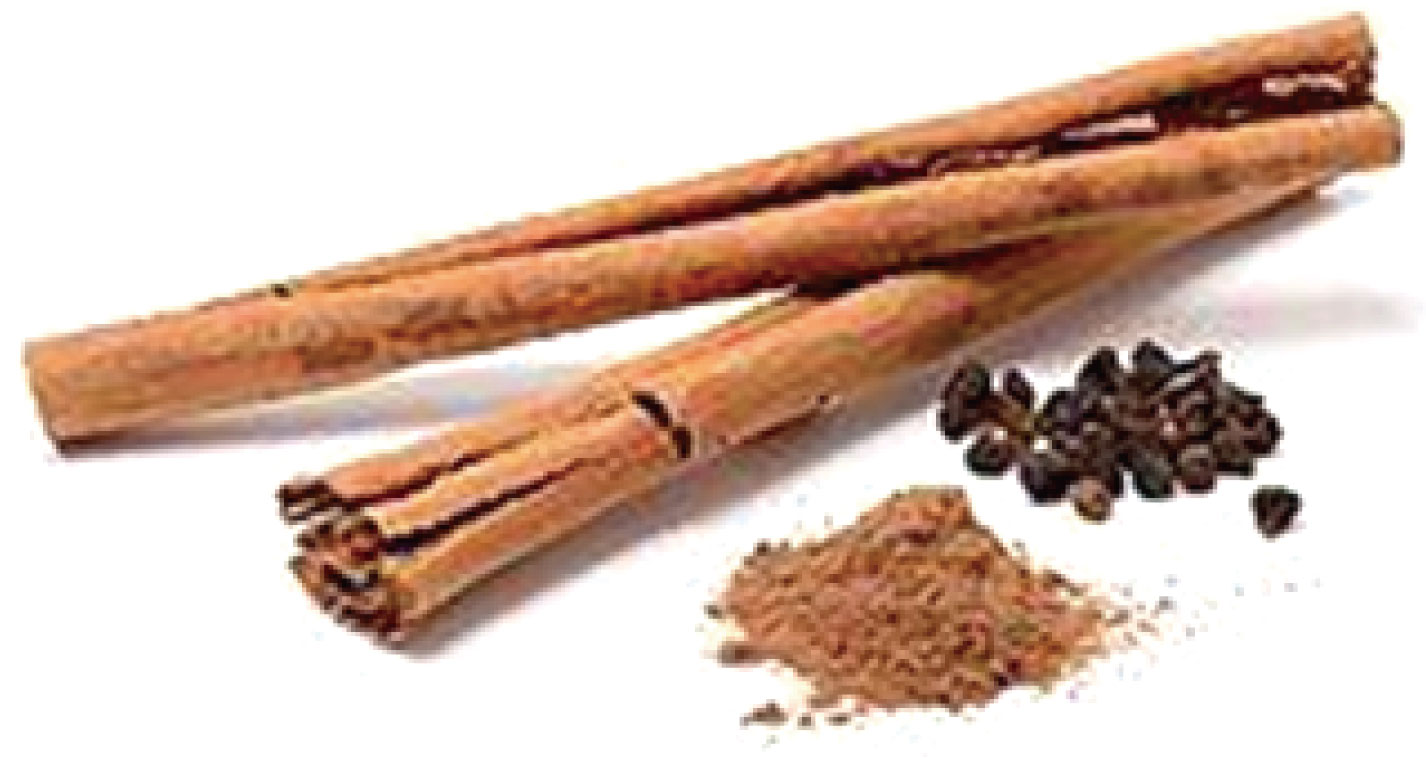
Fig. 1 The stickers of Cinnamon, flowers, and powder of the Cinnamomum verum plan.
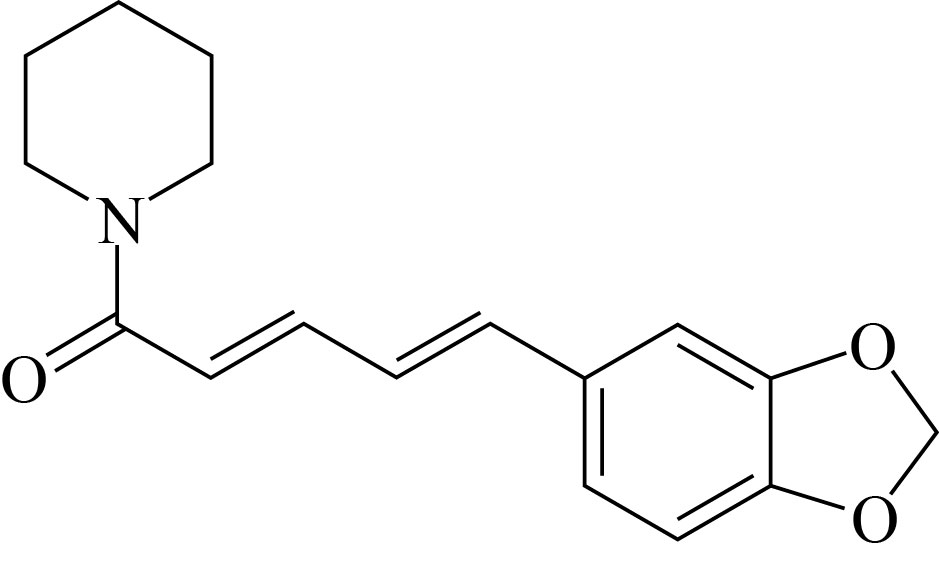
Fig. 2 Chemical structure of cinnamon.
Most alternative medicine scientists resort to the use of medicinal herbs in the treatment of most diseases, especially cancer, but using the other form of the herb is the nanoparticle. As in the case for cinnamon nanoparticles and studied them to treat many diseases so as to quickly enjoy their response to healing [2].
Scientists have studied herbal substances and their effect on the blood composition using electrochemical methods by cyclic voltammetric technique mediated on nanosensors [3-7].
Cinnamon nanoparticles (CNPs) in ethanol were prepared by pulse laser ablation in liquid (PLAL) technique to use in different application especially in nano-bio-medical and research interests [8]. One of important herbs compound is cinnamon spices which contain antimicrobial substances for the treatment of infection disease. cinnamon compound is provided different clinical impact on the disease [9]. Cyclic voltammetry and electrochemical impedance spectroscopy were used to identification of cinnamon compound that synthesized and improvement by environmental industrial electrodeposition of copper in an acidic medium as an extraction method [10]. volammetric evaluation of the anti-oxidative capacity of different herbs species were studied using glassy carbon electrode in the following series of:
Clove > juniper berries > nutmeg > cinnamon > rosemary > anise ≥ oregano > black pepper ≥ ginger ≥ basil > turmeric > red pepper ≈ bay leaf ≥ coriander ≈ red sweet pepper > cumin > caraway [11].
Cinnamon nanoparticles (CNps) were synthesized by ethanol – laser method and characterized by UV-Visible spectroscopy, Fourier transform infrared spectroscopy (FTIR), and transmission electron microscope (TEM), also, it can be prepared the CNPs for nanomedicine applications [12]. Another method was used to synthesize cinnamon nanoparticles by silver nitrate and valuated the activity of nanoparticles by different spectroscopic characterization; the silver-Cinnamon nanoparticles extract was enhanced the antiviral activity which used as a treatments for different infections in the cells [13]. Spherical CNPs were prepared using a new technique pulse laser ablation in liquid (PLAL) and characterized these NPs. CNPs was found as a biological activity and nontoxicity which can be used as antibacterial drugs. The CNPs were used as antibacterial drugs and food processing [14].
In this study cinnamon nanoparticles were characterized in blood medium using electrochemical analysis Preluded to applications in medicine field.
Experimental
Materials
Cinnamon grand form as dark brown powder was bought from localy market. Normal saline from Adwic Pharmaceticals Division (Egypt). Ascorbic acid from Technicon chemicals Co. (Tourni Belgique), and the blood were used in the experimental test that has been received from healthy humans in the center medicine of Baghdad City in Iraq and was also used in the cyclic voltammetric analysis. Double distilled water (deionized) was used for the preparation of aqueous solutions. The blood samples were diluted by normal saline solution with ratio of 1:9 ml (blood: normal saline), 10 ml of mixing blood was replaced in the cyclic voltammetric cell in every test.
Preparation of Cinnamon Nano-particles
Lyophylization (freeze-drying method)
The nano cinnamon particles were prepared using Lyophylization technique as in Fig. 3. Cinnamon in micro-particles were cooled with distilled water, the ice crystals from pure water form at -18 ° C through the cinnamon molecules was appeared. All steps of converted the micro particles of cinnamon must be continuous about 48-72 hours [15].
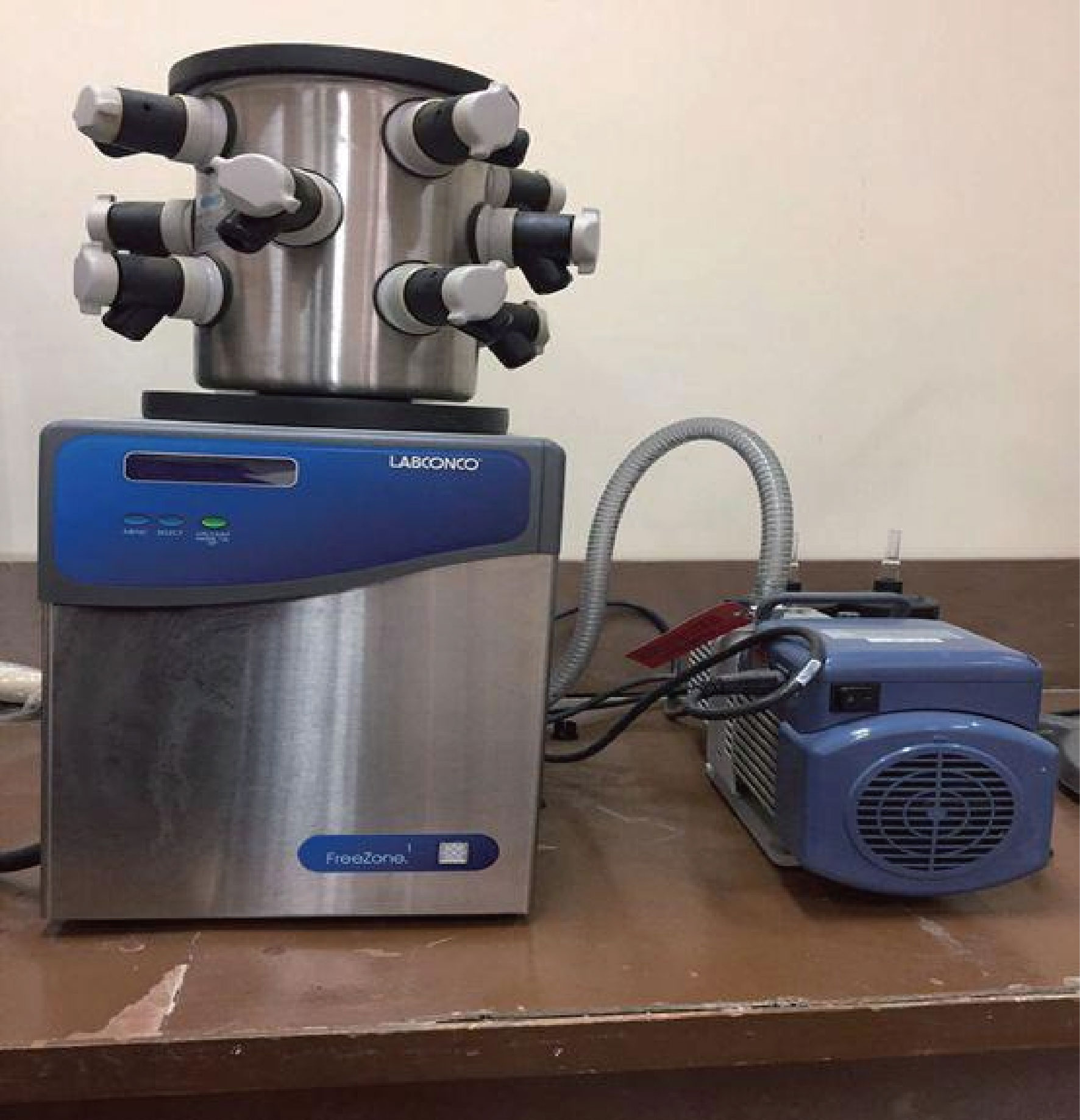
Fig. 3 Lyophylization instrument from LABCONCO Company (USA).
Tunnel Electron Microscopy (TEM) Study
Cinnamon nanoparticles (CNPs) were analyzed using TEM (Philips EM) analyses were done to determine the particle size which found about 40 nm of spherical nanoparticles as shown in Fig. 4.
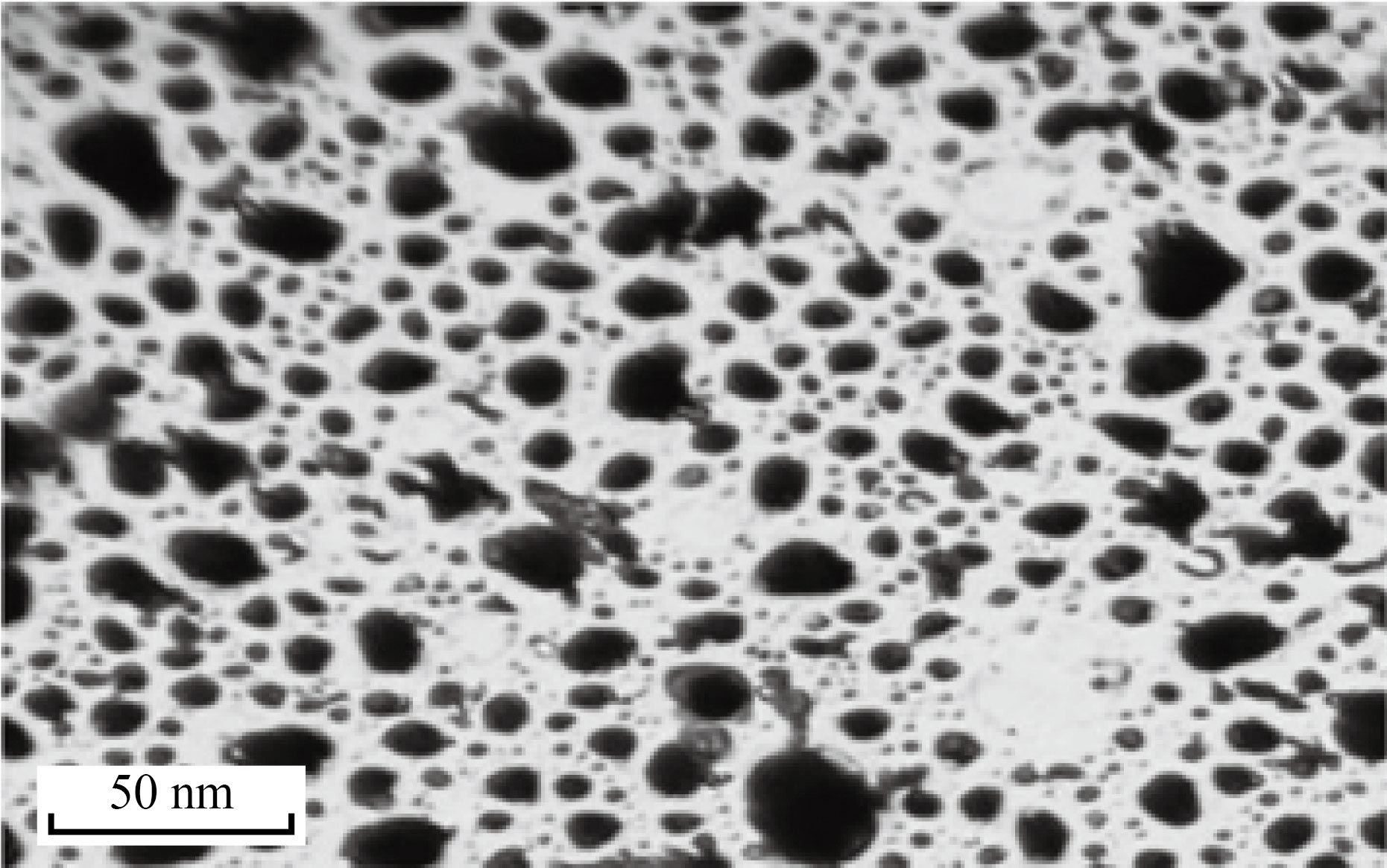
Fig. 4 TEM image of Cinnamon nanoparticles.
Scanning Electron Microscopy (SEM) study
Cinnamon nanoparticles (CNPs) were analyzed using SEM (GENEX, USA). The image demonstrated the majority of nanoparticles are relatively spherical to rode in shape and have smooth surface area as shown in Fig. 5.
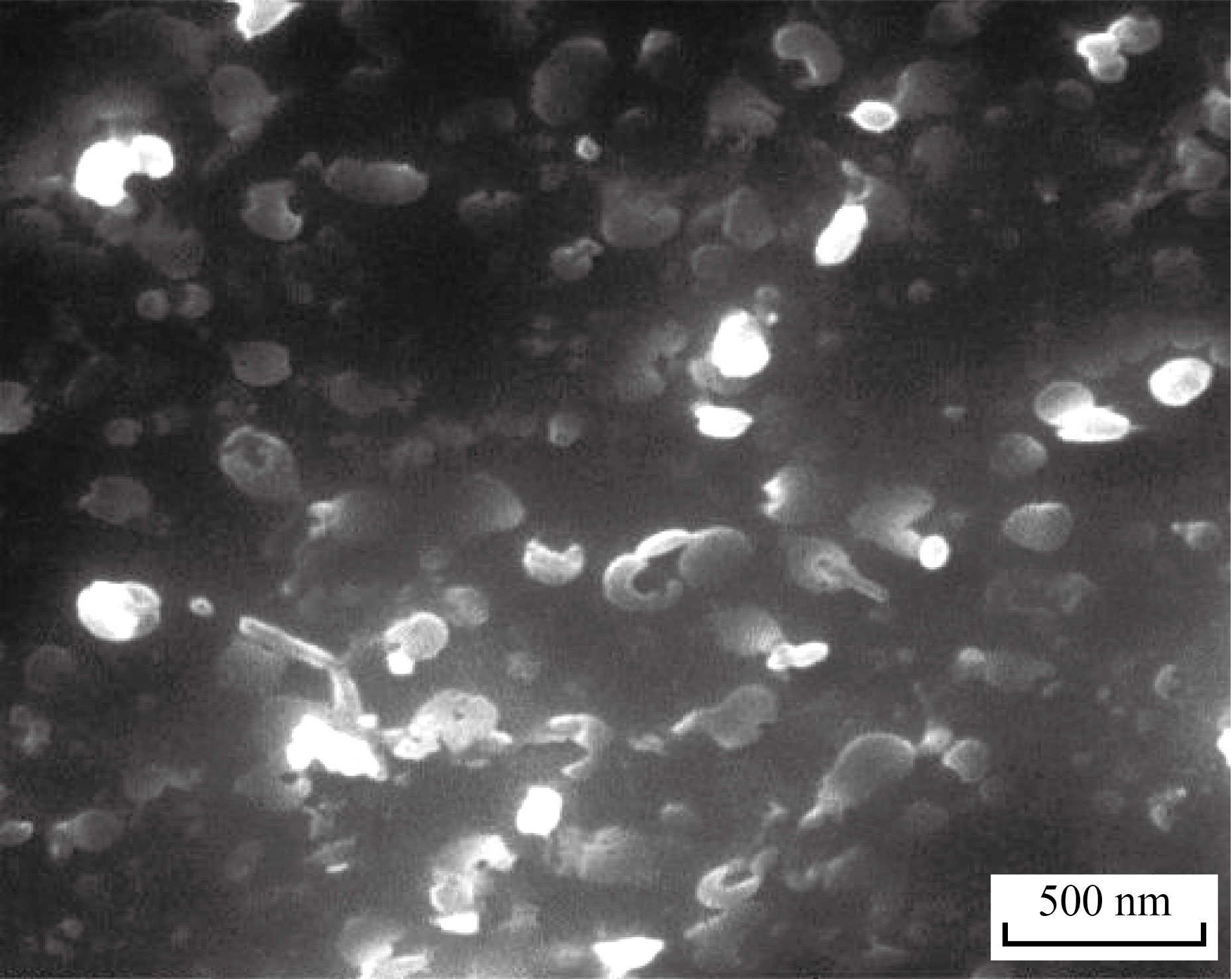
Fig. 5 SEM image of Cinnamon nanoparticles.
Results and Discussion
In recent time, the scientists were focused on using the nanoparticles of alternative medicine as a treatment for some incurable diseases, in this study; it was found the important electrochemical properties of cinnamon nanoparticles (CNPs) in blood medium to application in different field of medicine [16].
Effect of Different Concentration of Cinnamon in Blood Medium
Cinnamon nanoparticles (CNPs) are very active compound in blood medium which affected on the reaction of functional group in the CNPs with components of blood especially the hemoglobin and causes an oxidation - reduction current peaks at +750 and -780 mV respectively. Fig. 6 illustrated the cyclic voltammogram of different concentration of CNPs in blood medium which enhanced both redox current peaks against to increasing the concentration of CNPs [17].
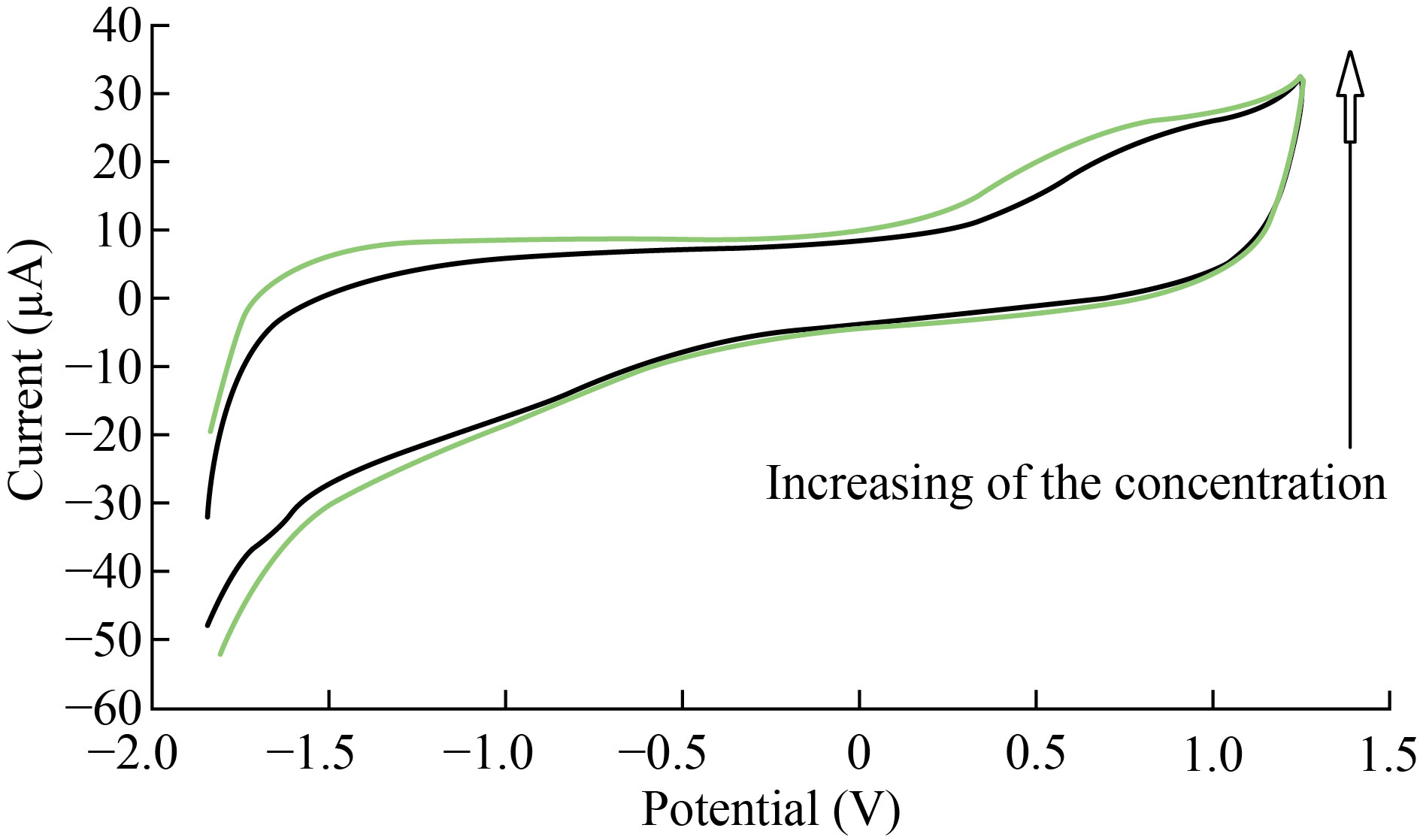
Fig. 6 Cyclic voltammogram of cinnamon nanoparticles at different concentration
using GCE in blood medium.
Effect of Different Scan Rate (SR)
It is usual to study the different scan rates by voltammetric technique to characterize the electrochemical properties of cinnamon nanoparticles in blood media. The results were found that increasing of scan rate produce the enhancement of oxidation - reduction current peaks of CNPs in blood media.
The relationship between logarithm of each anodic log (Ipa) and cathodic current peak log (Ipc) and logarithm of different scan rate log (SR) which giving straight lines as shown in Fig.s 7 and 8, respectively. The results were indicated that the redox mechanisms are diffusion controlled for cinnamon nanoparticles (CNPs) in blood medium [18]. Randles Sevick equation was used for the relationship between (oxidation and reduction) current peaks and square root of scan rate which gives straight lines as shown in Fig. 9. In this meaning, it indicates that the redox process is reversible and diffusion reaction [19,20].
It can be also determined the diffusion coefficient (Df) of oxidation – reduction of CNPs in blood media from the Randles Sevick equation:
Ip = (2.69 × 105 ) n3/2 AC Df 1/2 V1/2
where Df is the diffusion coefficient (cm2 /sec), Ip is the current peak (μA), V is the scan rate of the applied potential (V/sec), n is the number of moles of electrons transferred in the reaction, A is the area of the electrode (cm2), and
The diffusion coefficient of oxidation – reduction of CNPs in blood medium have the values of 2.77x10-6 and 4.43x10-6 cm2sec-1 respectively [21]. The diffusion coefficient values of redox current peaks of CNPs in blood media were indicated that the electrochemical reaction between CNPs and blood components by losing the electron and gaining the both two electrons with CNPs have a good mechanism for these processes [22].
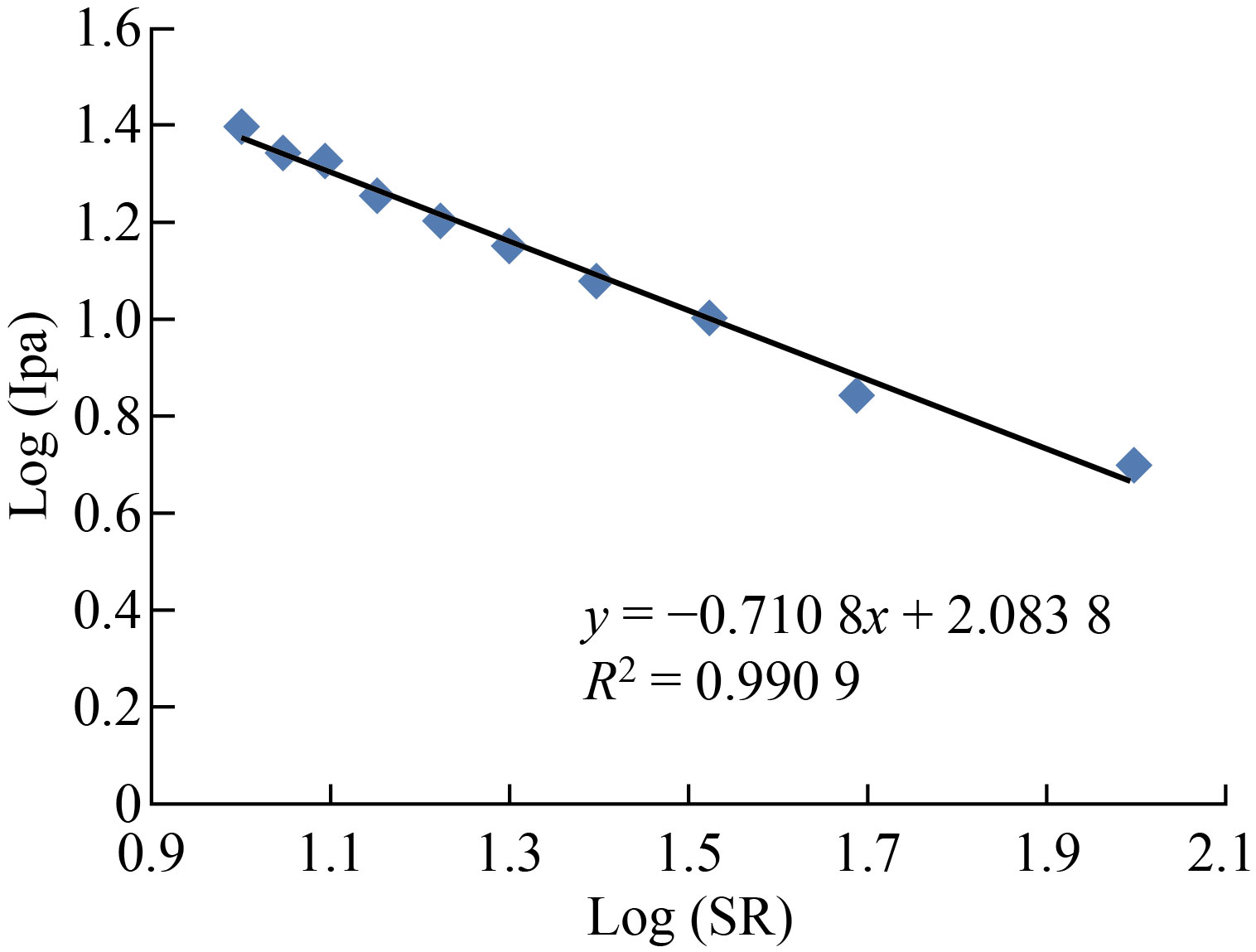
Fig. 7 Plotting Log(Ipa) against to Log(SR) of cinnamon NPs in blood media.
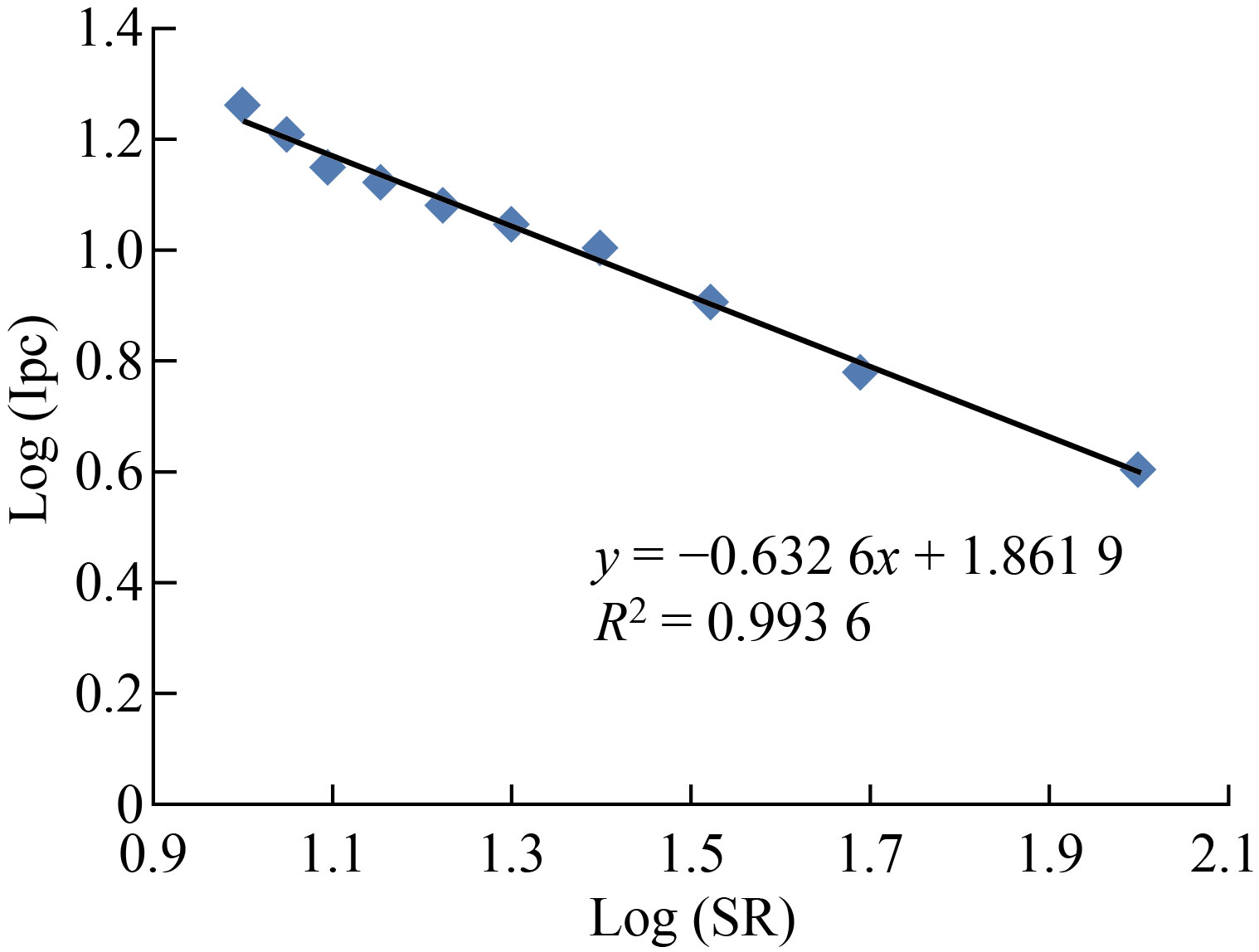
Fig. 8 Plotting Log(Ipc) against Log(SR) of cinnamon NPs in blood media.
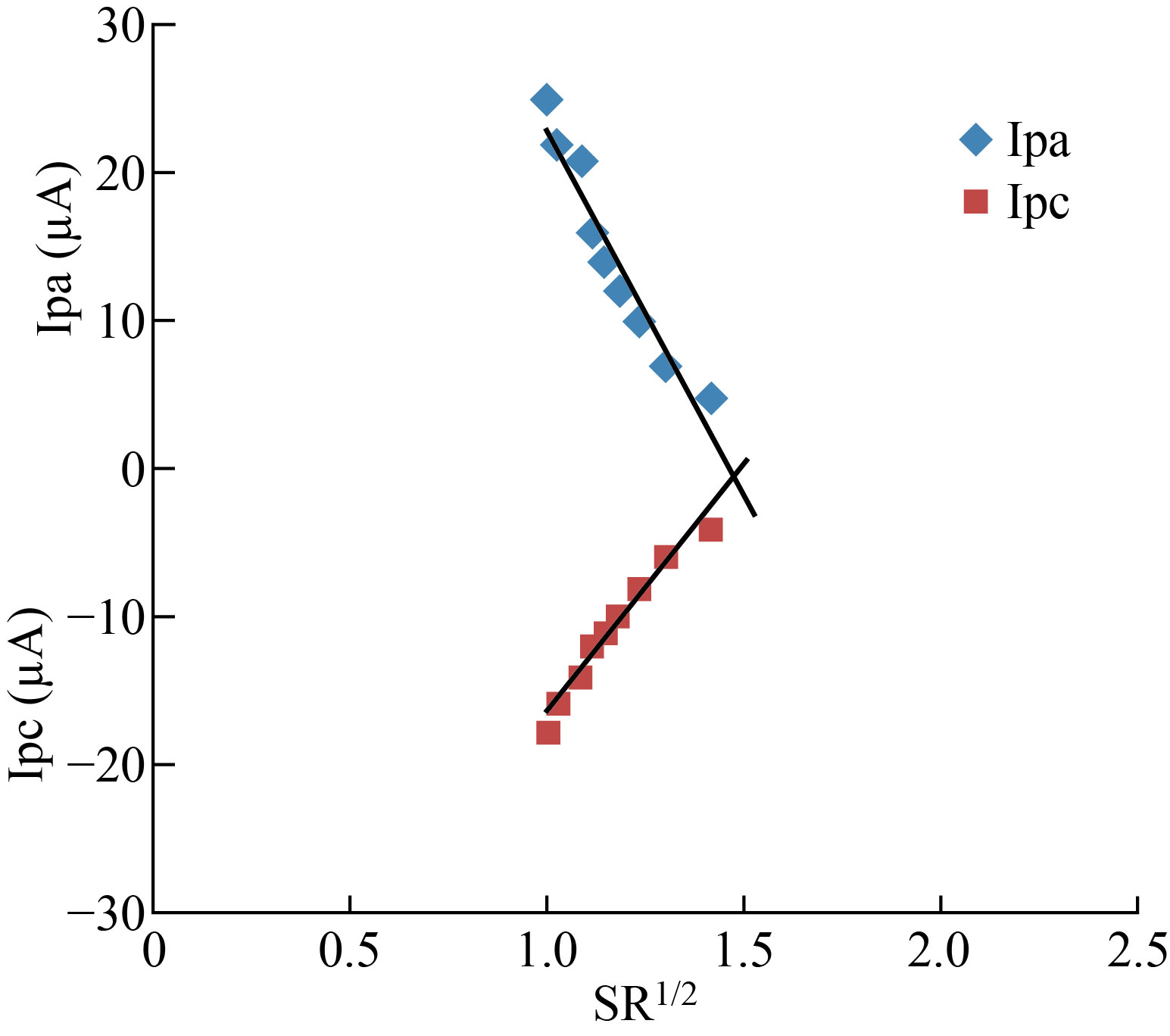
Fig. 9 Plotting each of anodic and cathodic current peaks of cinnamon nanoparticles in blood media against to square root of scan rate.
Effect of Different pH
The effect of different pH in blood medium is the most important study can be obtained the best scientific facts especially of CNPs in these conditions. It was found that cinnamon NPs act as anti-oxidative stress in acidic medium of blood at pH=3 by enhancement the cathodic current peak of -600 mV and disappearing of the anodic current peak at 750 mV as shown in Fig. 10. While the cinnamon NPs in natural blood medium at pH=7 is oxidative reagent as illustrated in the cyclic voltammogram of Fig. 10, so the high acidity of blood CNPs acts with good reaction in these medium [23].
In alkaline medium (pH13) the reaction of CNPs in blood is different than in acid, the both oxidation – reduction current peaks of CNPs at 750 and -600 mV were enhanced comparing with neutral pH=7 as shown in Fig. 11-14 [24, 25].
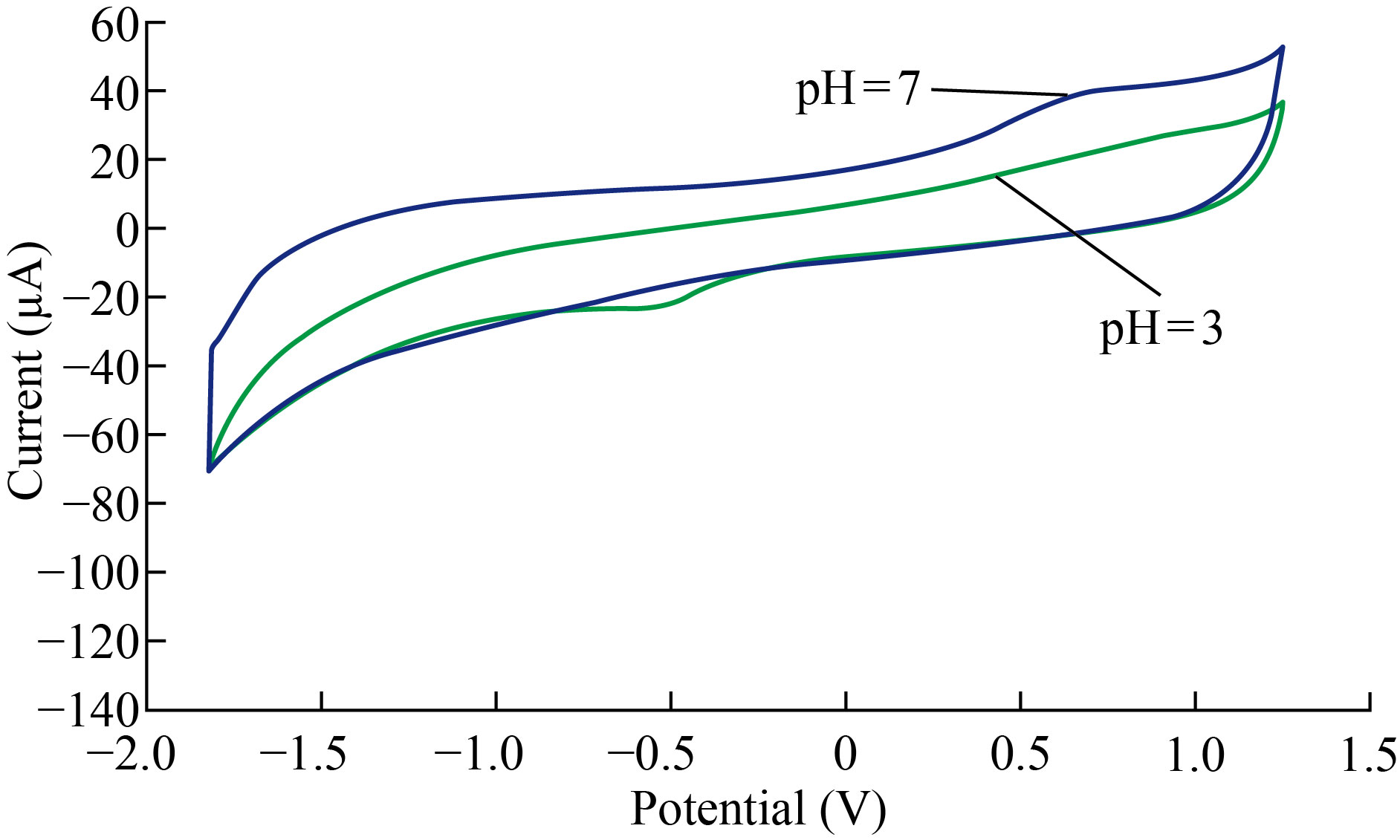
Fig. 10 Cyclic voltammogram of CNPs in blood media at different pH (7 and 3).
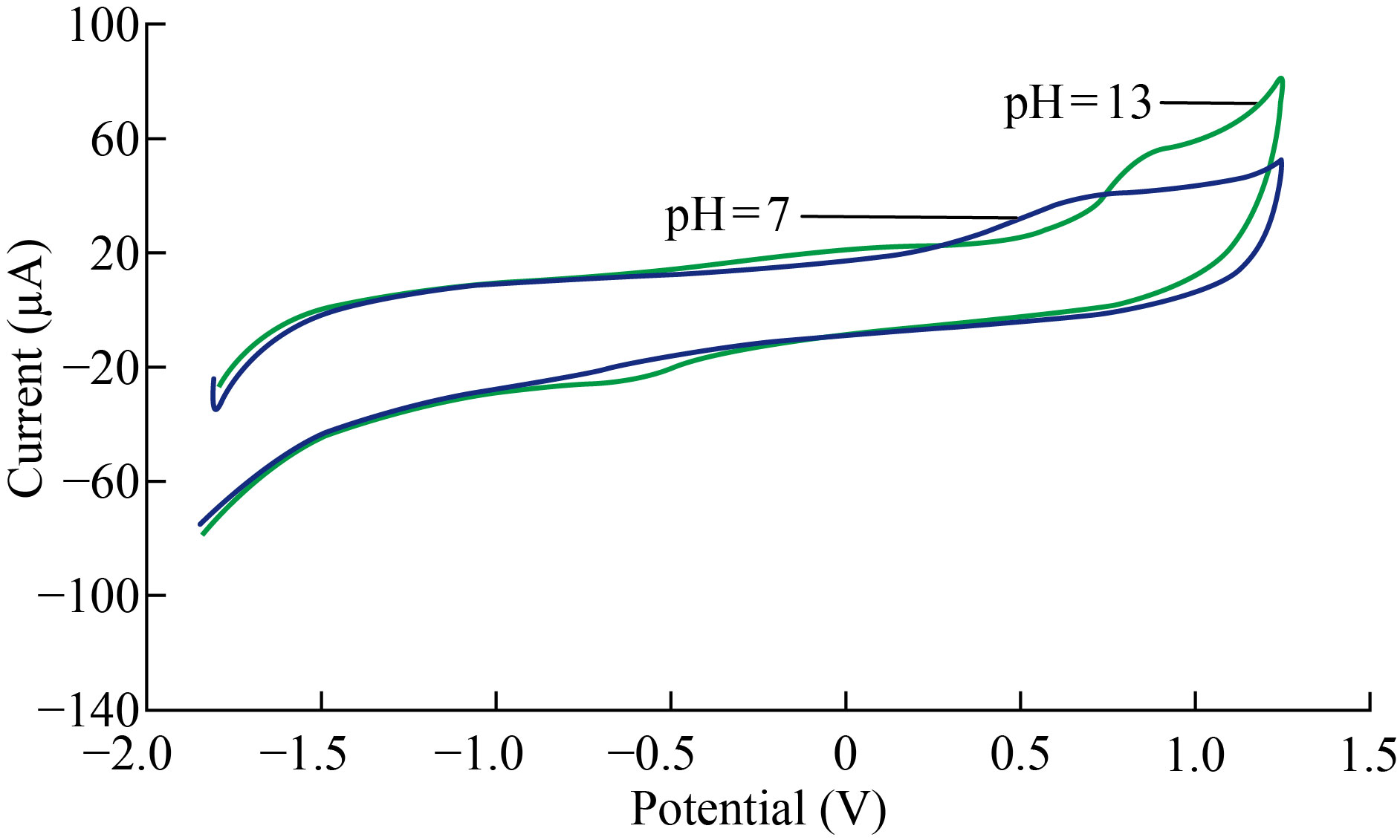
Fig. 11 Cyclic voltammogram of CNPs in blood media at different pH (7 and 13).
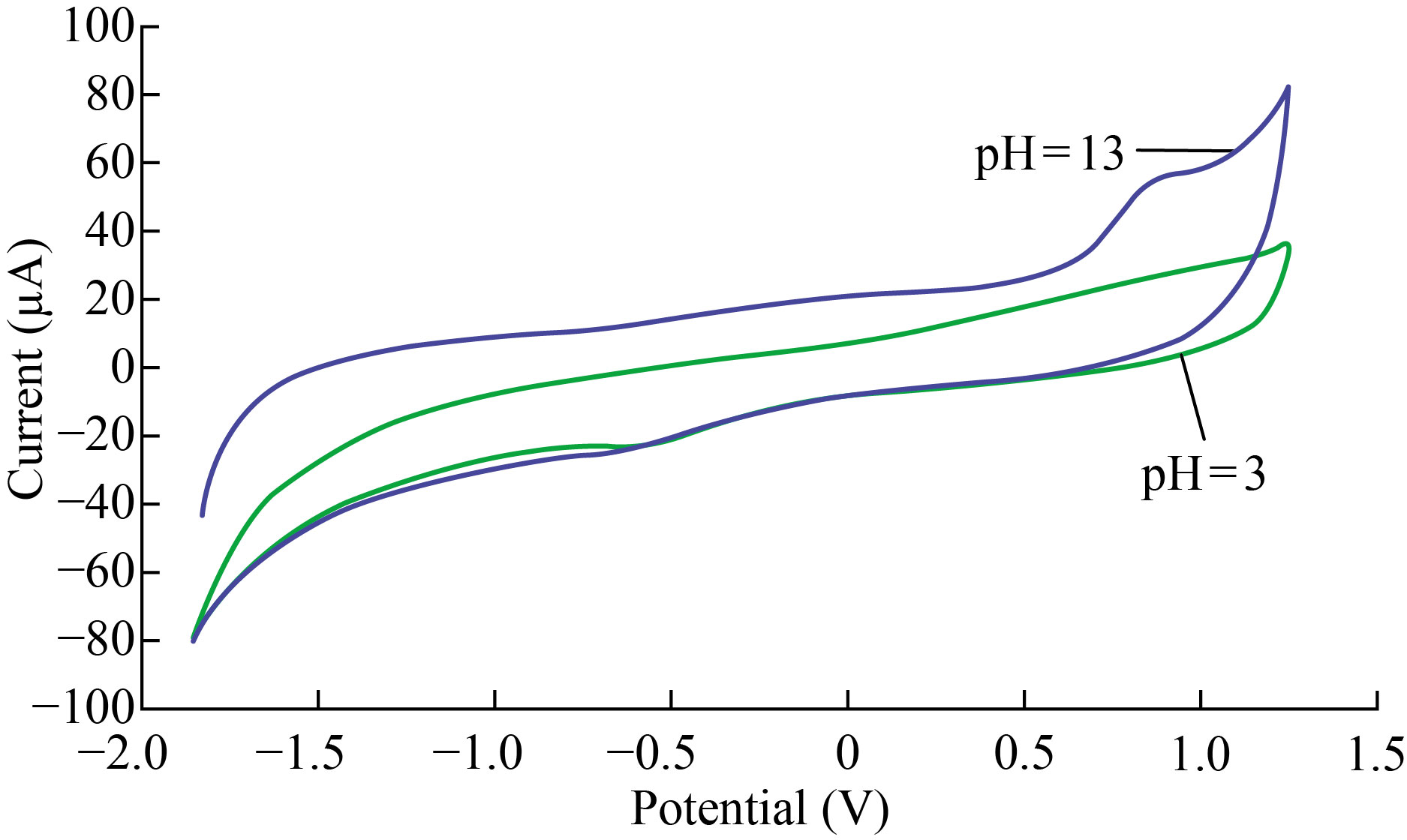
Fig. 12 Cyclic voltammogram of CNPs in blood media at different pH (3 and 13).
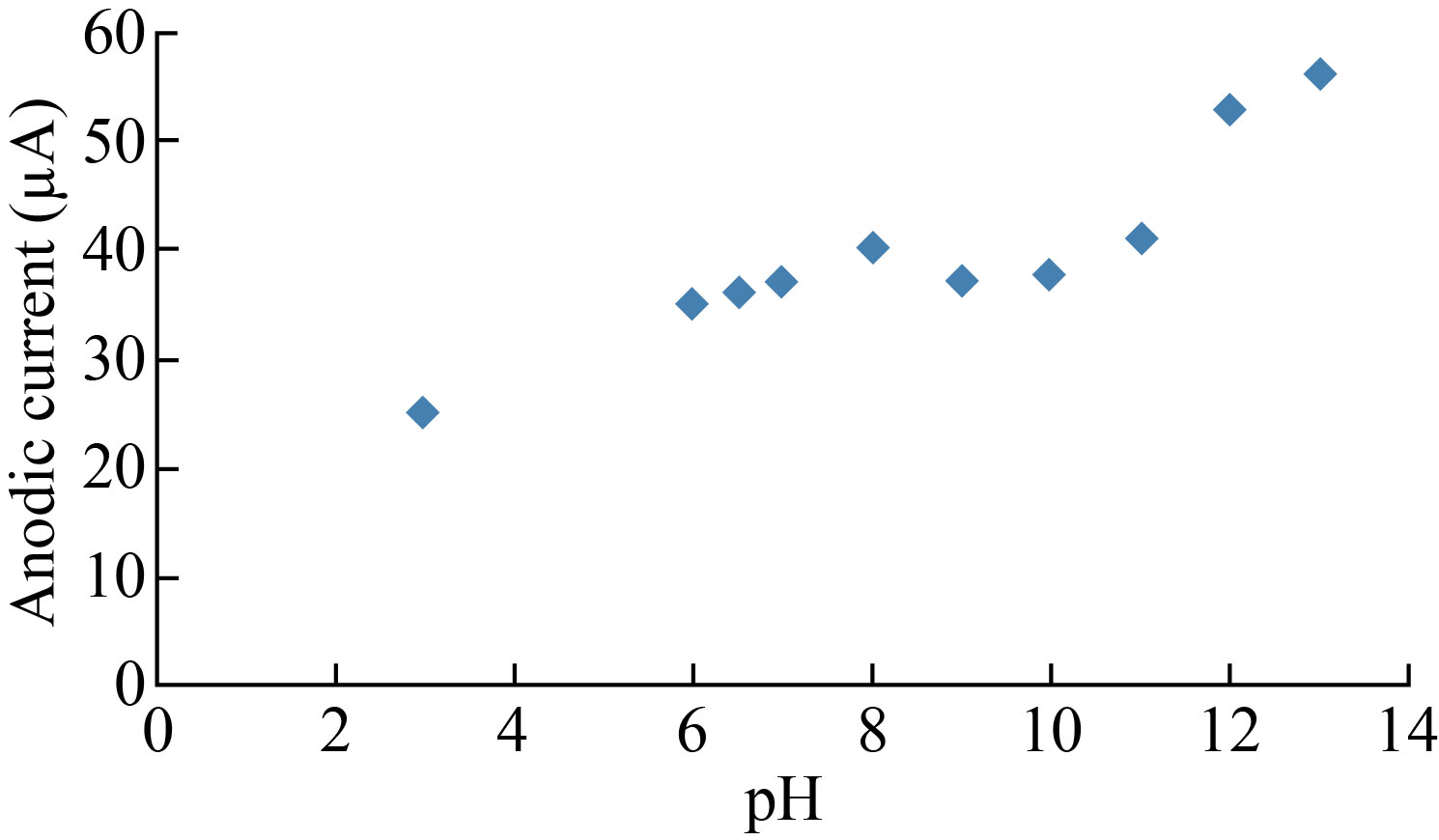
Fig. 13 Plotting anodic current peak and different pH (3-13).
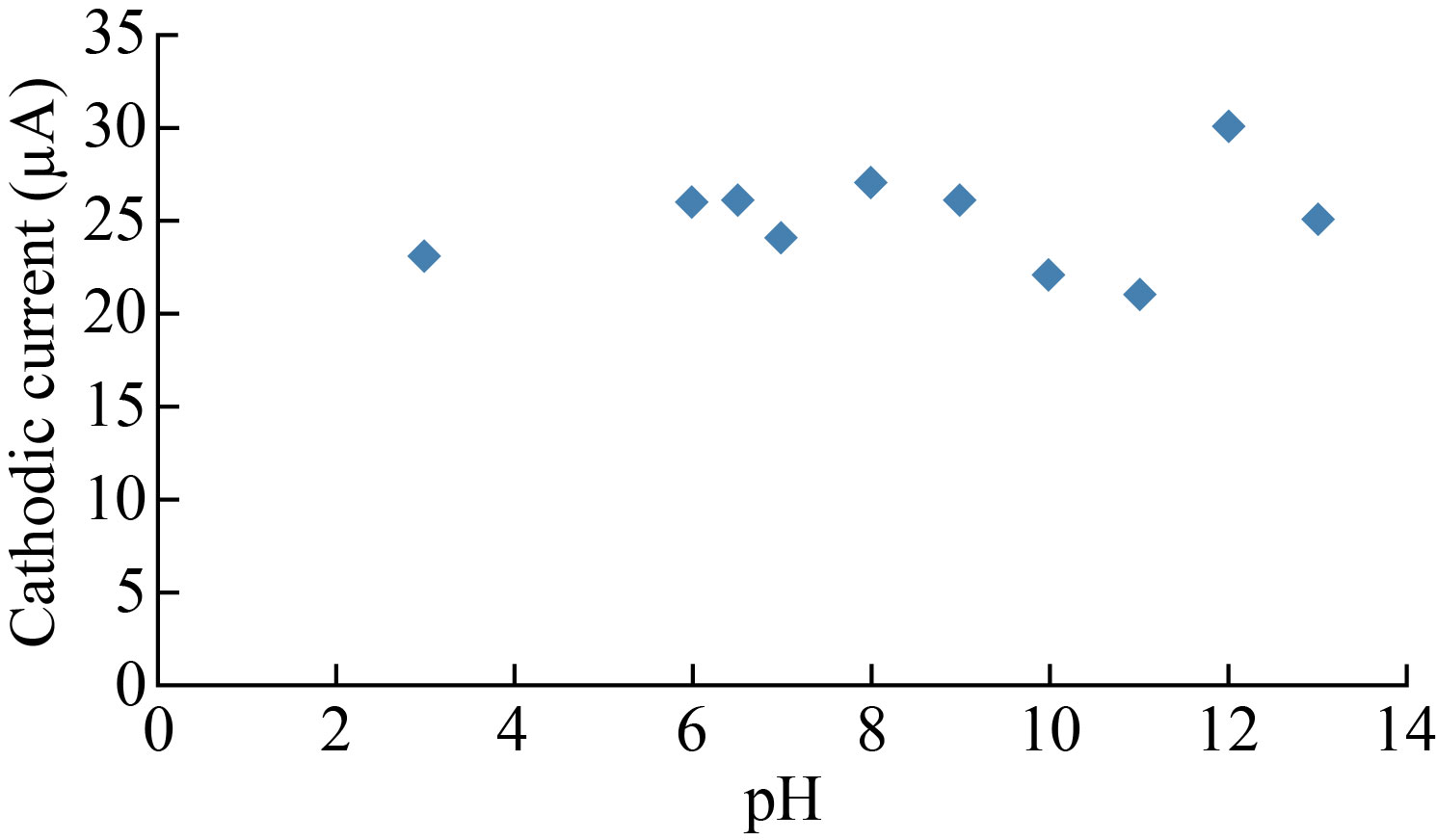
Fig. 14 Plotting cathodic current peak and different pH (3-13).
Effect of Different Concentration of AA on Cinnamon in Blood Medium
Ascorbic acid (AA) is one of the chemical compound which affected on the blood component present with the cinnamon nanoparticles (CNPs) with high oxidation current peak of AA which enhanced the reduction current peak of CNPs at -750 mV. Another reduction current peak also appears at +125 mV as shown in Fig. 15. The adding of AA on the cinnamon nanoparticles in blood medium causes enhancement of the reduction current peak proportionally as a linear line with good sensitivity (y = 32.857X + 12.886 and R2=0.8686) as shown in Fig. 16.
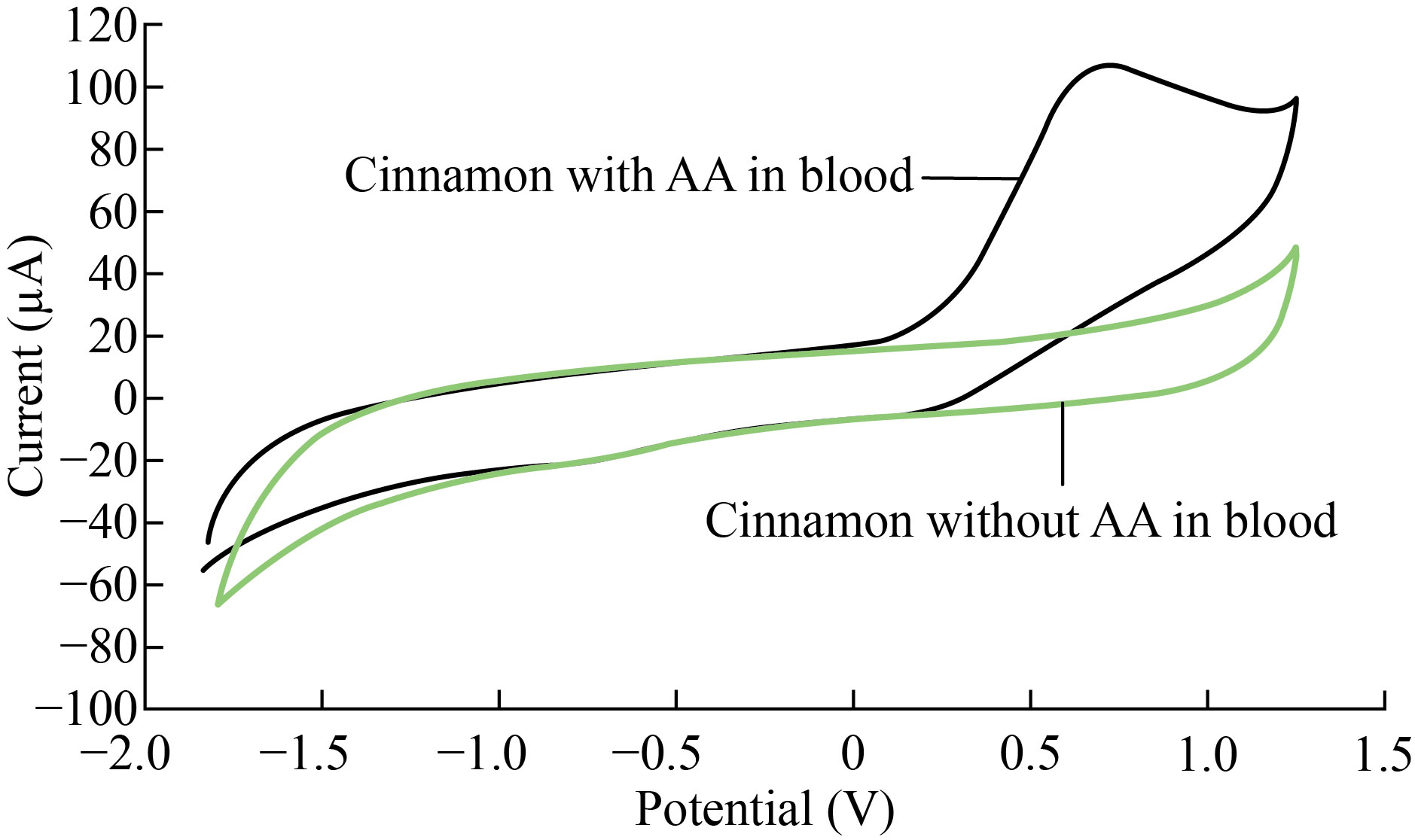
Fig. 15 Cyclic voltammogram of cinnamon NPs with and without AA in blood medium on GCE.

Fig. 16 Plotting cathodic current peak of cinnamon NPs and different concentration of AA in blood medium.
Reliability and stability study
Good reliability and stability were found for the electrochemical analysis of cinnamon NPS in blood medium. They were illustrated in Fig. 17 at ten times of cyclic voltammogram overlapping with low relative standard deviation (RSD) of redox current peaks of CNPs using GCE as working electrode [25].
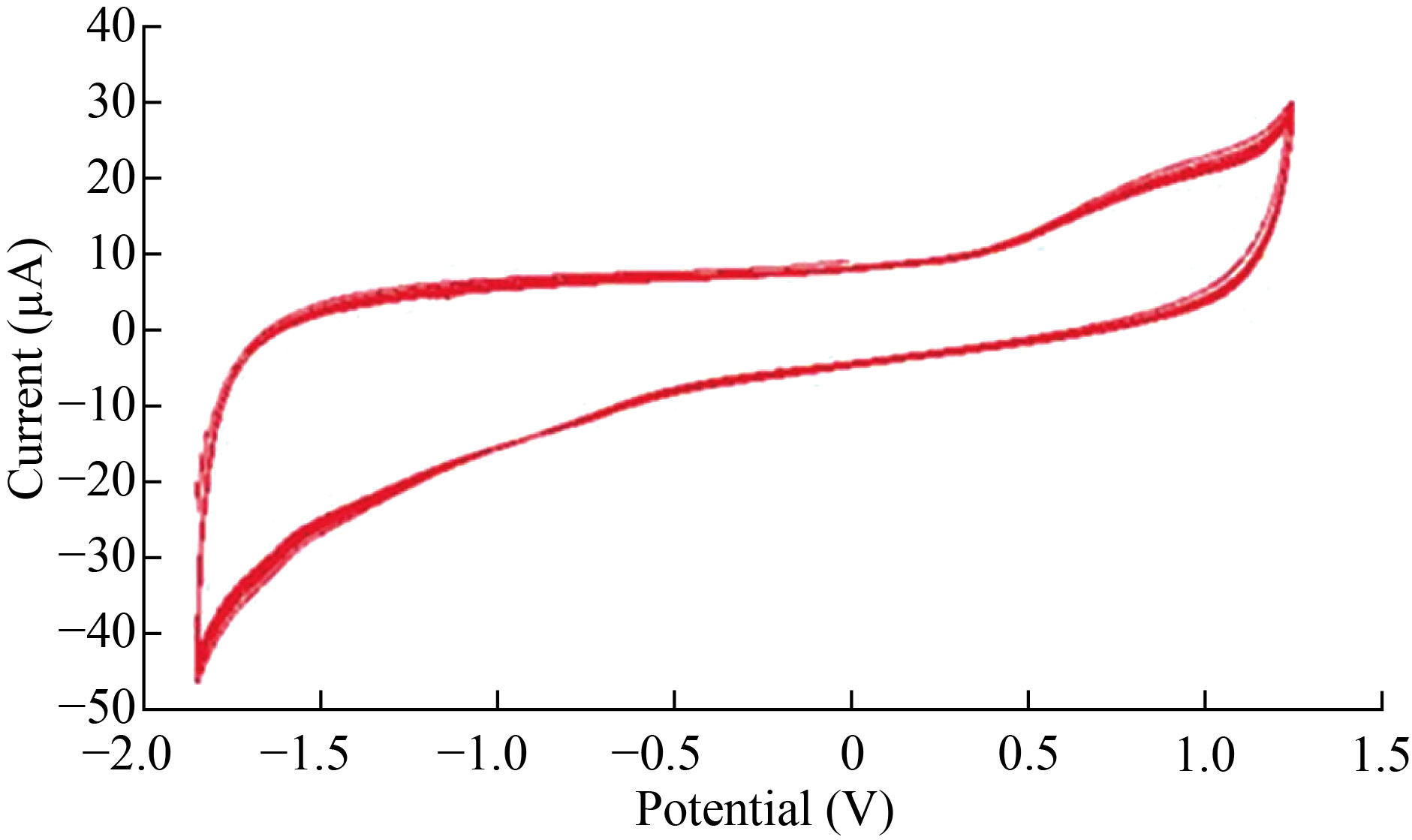
Fig. 17 Cyclic voltammogram of cinnamon NPs in blood media for ten times using GCE.
Conclusions
The effect of cinnamon nanoparticles in blood composition is considered to be an antioxidant reagent, especially in the alkaline medium, where ascorbic acid (AA) enhanced the reduction current peak of CNPs. But it exceeds the formation of the second reduction current peak, which means that the nanoparticles are a rich substance of free radical in blood medium. They may be have the ability to eliminate the cancer diseases in blood medium.
Conflict of Interests
The authors declare that no competing interest exists.
References
1."Cinnamon". Encyclopedia Britannica. 6 (11th ed.). 1911. p. 376.
2. "Cinnamon". EncyclopediaBritannica. 2008. ISBN 1-59339-292-3. (species Cinnamomumzeylanicum), bushy evergreen tree of the laurel family (Lauraceae) native to Malabar Coast of India, Sri Lanka (Ceylon) Bangladesh and Myanmar (Burma).
3. ManarGhyathAbd-Almutalib Al-Mosawy, Emad Abbas Jaffar Al-Mulla, Muhammed Mizher Radhi, A Voltammetric Properties of Biopolymer Nano- Composites Based Polybutylene Succinate/Epoxidized Palm Oil, Nano Biomed. Eng., 2018, Vol. 10, Iss. 3, 217-223.
4. Muhammed Mizher Radhi, MaysaraSamerKhalaf, Zainab OunAli,Voltammetric study of saffron in blood mediated by modified glassy carbon electrode (GCE) with carbon nanotube (CNT/GCE), Journal of Silicate Based and Composite Materials, 2018, Vol. 70, No. 3, 78-81
5. Muhammed Mizher Radhi, LamyaaAbdAlrahman Jawad, Emad Abbas Jaffar Al-Mulla, ThamerAboud Al-Dabbagh, Saffron in KCl Mediated by Glassy Carbon Electrode Using Cyclic Voltammetry, Nano Biomed. Eng., 2018, Vol. 10, Iss. 2, 181-185
6. Muhammed Mizher Radhi, ZuhairNumanHamed, Selda Sabah Ezzaldeen, Emad Abbas Jaffar Al-Mulla, Effect of Micro- and Nanoparticles of Ampicillin Trihydrate on Blood Medium: A Voltammetric Study, Nano Biomed. Eng., 2017, Vol. 9, Iss. 3, 185-190.
7. Fatma .A. Khazaal, Hussein. J.Mohammed and Muhammed .M.Radhi, Novel cyclic voltammetry behavior of 3-((benzothiazol-2- diazenylnaphthalene-2,7-diol and use it for spectrophotometric determination of copper (II )in honey sample, Journal of Advances in Chemistry, Volume 12 Number 7, 4243, 2016
8. Ali Aqeel Salim1, NoriahBidin, HazriBakhtiar, Sib Krishna Ghoshal, Mohammed Al Azawi, Ganesan Krishnan, Optical and structure characterization of cinnamon nanoparticles synthesized by pulse laser ablation in liquid (PLAL), IOP Conf. Series: Journal of Physics: Conf. Series 1027 (2018) 012002 doi :10.1088/1742-6596/1027/1/012002
9. SeyedFazelNabavi, Arianna Di Lorenzo, Morteza Izadi, Eduardo Sobarzo-Sánchez, Maria Daglia, and Seyed Mohammad Nabavi, Antibacterial Effects of Cinnamon: From Farm to Food, Cosmetic and Pharmaceutical Industries, Nutrients 2015, 7, 7729-7748; doi:10.3390/nu7095359
10. K. Dahmani, M. Galai, A. Elhasnaoui, B. Temmar, A. El Hessni, M. Cherkaouiand A. Zarrouk, Environmental Cinnamon Extracts Effect on Electrodeposition of Copper in an Acidic Bath, PortugaliaeElectrochimicaActa 2018, 36(2), 119-131
11. G. K. Ziyatdinova, H. C. Budnikov, Evaluation of the antioxidant properties of spices by cyclic voltammetry,Journal of Analytical Chemistry, 2014, Volume 69, Issue 10, pp 990–997.
12.Ali Aqeel Salim, NoriahBidin, HazriBakhtiar, Sib Krishna Ghoshal, Mohammed Al Azawi and Ganesan Krishnan, Optical and structure characterization of cinnamon nanoparticles synthesized by pulse laser ablation in liquid (PLAL), Journal of Physics: IOP, Conference Series, Volume 1027, Number 1, 2010.
13.Fatima M, Zaidi NU, Amraiz D1, Afzal F, In Vitro Antiviral Activity of Cinnamomum cassia and Its Nanoparticles Against H7N3 Influenza A Virus, J MicrobiolBiotechnol. 2016 Jan;26(1):151-9. doi: 10.4014/jmb.1508.08024.
14. Ali AqeelSalima, NoriahBidina Sib, Krishna Ghoshalb, Growth and characterization of spherical cinnamon nanoparticles: Evaluation of antibacterial efficacy, LWT, Volume 90, April 2018, Pages 346-353
15. W. Abdelwahed, G. Degobert, S. Stainmesse and H. Fessi, Freeze-drying of nanoparticles: formulation, process and storage considerations. Adva drug deliv revi.,2006, 58(15):1688-1713.
16. Abdel-Tawwab M, Samir F, Abd El-Naby AS, Monier MN, Antioxidative and immunostimulatory effect of dietary cinnamon nanoparticles on the performance of Nile tilapia, Oreochromisniloticus (L.) and its susceptibility to hypoxia stress and Aeromonashydrophila infection, Fish Shellfish Immunol. 2018 Mar;74:19-25.
17. Muhammed Mizher Radhi, HanaaNaji Abdullah, Majid Sakhi Jabir, Emad Abbas Jaffar Al-Mulla, Electrochemical Effect of Ascorbic Acid on RedoxCurrent Peaks of CoCl2 in Blood Medium, Nano Biomed. Eng., 2017, Vol. 9, Iss. 2, 103-106.
18. Mohamed A. Morsi, Esam A. Gomaaand Alaa S. Nageeb. Thermodynamic data (Voltammetrically) Estimated for the Interaction of Nano Cadmium Chloride (Ncc) with Isatin Using Glassy Carbon Electrode. Asian Journal of Nanoscience and Materials, 2018, 1 (4), 282-293.
19. Muhammed Mizher Radhi, Emad A. Jaffar Al-Mulla,Use of a grafted polymer electrode to study mercuryions by cyclic voltammetry, Res ChemIntermed, vol.41, no.6, 1413-1420, 2015.
20. Bard, A. J. and R. F. Larry; Electrochemical Methods: Fundamentals and Applications, 2nd ed., Wiley, New York, U.S.A. (2000)
21. Muhammed Mizher Radhi, LamyaaAbdAlrahman Jawad, Emad Abbas Jaffar Al-Mulla, Saffron in KCl Mediated by Glassy Carbon Electrode Using Cyclic Voltammetry, Nano Biomed. Eng., 2018, 10(2): 181-185.
22. M.M. Radhi , E.A.J. Al-Mulla, voltammet r ic characterization of grafted polymer electrode selfmodification with carbon nanotubes (GPESMCNT). Portug.Electrochim.Acta., 2016, 34(2): 97-103.
23.Yee AH, Rabinstein AA, Neurologic presentations of acid-base imbalance, electrolyte abnormalities, and endocrine emergencies, NeurolClin. 28 (1): 1–16 (2010).
24. Needham, A. 2004. Comparative and Environmental Physiology.Acidosis and Alkalosis (USA).
25. M.M. Radhi, EAJ Al-Mulla, WT Tan, Electrochemical characterization of the redox couple of Fe (III)/Fe (II) mediated by grafted polymer electrode, Research on Chemical Intermediates, 2012, 40 (1), 179-192.
Copyright© Muhammed Mizher Radhi, Anfal Ismael Ibrahim, Majid Sakhi Jabir, Emad Abbas Jaffar Al-Mulla, and Wisam Hindawi Hoidy. This is an open-access article distributed under the terms of the Creative Commons Attribution License, which permits unrestricted use, distribution, and reproduction in any medium, provided the original author and source are credited.